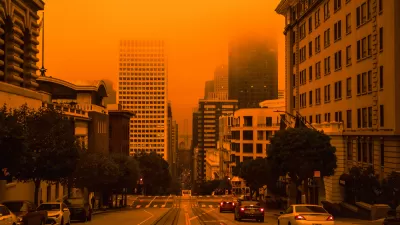Scientists are taking seriously proposals to artificially and massively change the Earth's ecosystems -- to "geoengineer" the planet -- to put the brakes on climate change.
"In the last two years, geoengineering has gone from the implausible purview of Dr. Evil-style kooks to a subject of serious scientific and political debate. In the U.K., the Royal Society, the country's de facto academy of science, has launched a major study and a parliamentary committee is preparing a report. In the U.S., the National Academy of Sciences is planning a similar probe. Last week, President Barack Obama's chief science adviser, John Holdren, revealed the administration has been discussing the options, with a focus on scattering-perhaps by plane, balloon, giant floating chimneys, or even artillery fire-massive quantities of sulphates or other aerosols in the upper atmosphere.
The idea is to mimic the effect of massive volcanic eruptions like Mount Pinatubo, which lowered global temperatures by 0.5° C after spewing out 18 million tonnes of SO2 in 1991. But what he didn't mention should be of particular concern to Canadians. The logical lab for such experiments-100,000 tanker plane flights a year per one estimate-would be the Arctic, where the cooling would be of the greatest benefit, restoring sea ice and turning down the global thermostat.
[T]he basic problem with geoengineering [is that] no one is quite sure what happens 'downstream' when you start messing with bits and pieces of the global climate. Would a colder Arctic mean more or less rain in the tropics? If you dissolved more CO2 in the seas, how would that effect marine life? Would the ecosystem be able to handle all that extra sulphur in the atmosphere? The cure could very well end up being worse than the disease."
FULL STORY: PLan B for Global Warming

Manufactured Crisis: Losing the Nation’s Largest Source of Unsubsidized Affordable Housing
Manufactured housing communities have long been an affordable housing option for millions of people living in the U.S., but that affordability is disappearing rapidly. How did we get here?

Americans May Be Stuck — But Why?
Americans are moving a lot less than they once did, and that is a problem. While Yoni Applebaum, in his highly-publicized article Stuck, gets the reasons badly wrong, it's still important to ask: why are we moving so much less than before?

Research Shows More Roads = More Driving
A national study shows, once again, that increasing road supply induces additional vehicle travel, particularly over the long run.

Judge Halts Enforcement of Anti-Homeless Laws in Grants Pass
The Oregon city will be barred from enforcing two ordinances that prosecute unhoused residents until it increases capacity and accessibility at designated camping sites.

Advancing Sustainability in Los Angeles County Schools
The Los Angeles County Office of Education’s Green Schools Symposium brings together educators, students, and experts to advance sustainability in schools through innovative design, climate resilience strategies, and collaborative learning.

Using Old Oil and Gas Wells for Green Energy Storage
Penn State researchers have found that repurposing abandoned oil and gas wells for geothermal-assisted compressed-air energy storage can boost efficiency, reduce environmental risks, and support clean energy and job transitions.
Urban Design for Planners 1: Software Tools
This six-course series explores essential urban design concepts using open source software and equips planners with the tools they need to participate fully in the urban design process.
Planning for Universal Design
Learn the tools for implementing Universal Design in planning regulations.
City of Moreno Valley
Institute for Housing and Urban Development Studies (IHS)
City of Grandview
Harvard GSD Executive Education
NYU Wagner Graduate School of Public Service
City of Cambridge, Maryland
Newport County Development Council: Connect Greater Newport



























